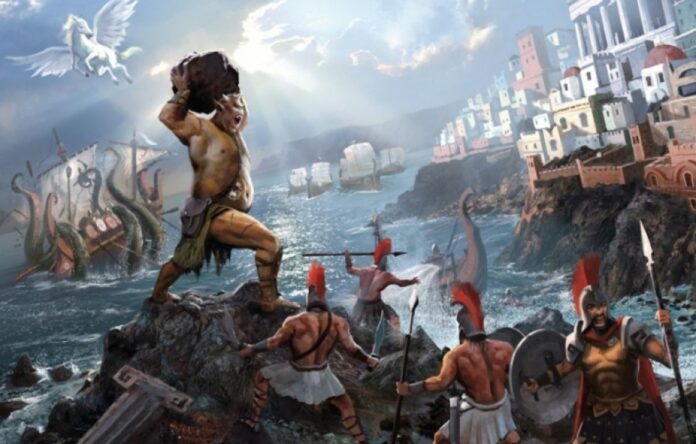In ancient Greek myths, evil and cunning one-eyed giants, known as cyclopes, are often mentioned. The great Homer recounts their tales in the “Odyssey.” Odysseus and his companions encountered these giants on one of the islands and, thanks to their wit and agility, managed to defeat them.
It might be assumed that cyclopes are a figment of the ancients’ imagination, which created an impressive bestiary of strange creatures. But the truth is much more complex and interesting. The legends of cyclopes did not arise out of nowhere; they were inspired by terrifying discoveries.
Thousands of years ago, residents of the Mediterranean islands of Malta, Cyprus, Crete, and others found strange skulls with tusks and a single large eye socket. These skulls were much larger than human skulls and looked like the remains of dangerous and terrifying creatures. It was these finds that gave rise to the legends of cyclopes lurking on rocky islands, ready to ambush sailors.
Odysseus Blinds the Cyclops Polyphemus
Scientists only solved the mystery of these skulls in the early 20th century. It turned out that they belonged to… elephants. Not the elephants we know today in Africa and Asia, but their extinct dwarf relatives, the species Palaeoloxodon falconeri, which once inhabited the Mediterranean archipelagos. These animals were the size of ponies.
The hole that the Greeks took for an eye socket was actually meant for the trunk. It was essentially a large nostril. The real eye sockets, much smaller in size, were located lower and on the sides of the head. But how did elephants end up on patches of land surrounded by the sea, and why were they so small? Science has long since found the answers to these questions.
The Appearance of Island Wildlife
The story of the small elephants began about 5 million years ago, during the Miocene epoch. Due to the movement of the Earth’s crust, the Strait of Gibraltar disappeared, and what became the Mediterranean Sea turned into a rapidly drying lake of enormous size. Over hundreds of thousands of years, the sea nearly dried up, leaving many small saltwater lakes.
Land bridges formed, allowing animals from Africa to migrate freely into Europe. But then a series of earthquakes destroyed the connection between Africa and Europe. A massive waterfall formed, gradually filling the Mediterranean Sea. The highlands turned into islands, isolating the animals.
When Elephants Were Small
Initially, the elephants on the islands were not miniature. They became small due to a phenomenon known as “island dwarfism.” On small islands, there is little food, but there are also no predators. Thus, animals have no reason to be large. This phenomenon gave rise to Shetland ponies (small horses), the Japanese wolf (extinct in the early 20th century), and the Malagasy hippopotamus.
Over time, the island elephants shrank. They stood about one meter tall and weighed around 200 kilograms. Elephants on the Mediterranean islands could be found relatively “recently”—they went extinct 10,000 years ago. Ancient hunters played a key role in their disappearance. The miniature herbivorous elephants were no more dangerous than wild pigs, and they were gradually exterminated.
The ancient Greeks did not encounter these elephants but found many of their remains. While many were familiar with regular elephants at the time, who could have imagined there were once dwarf elephants? Seeing the peculiar skulls with a single “eye socket,” people created stories about cyclopes.
